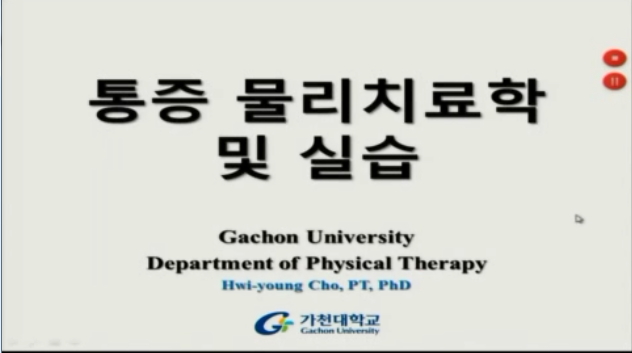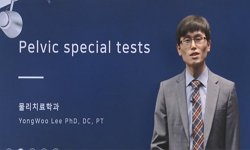Background: The aim of the study was to compare the pain relieving effect and the time spent in the recovery unit after treatment with high frequency, high-intensity transcutaneous electrical nerve stimulation (TENS) or intravenous (IV) opioids after ...
http://chineseinput.net/에서 pinyin(병음)방식으로 중국어를 변환할 수 있습니다.
변환된 중국어를 복사하여 사용하시면 됩니다.
- 中文 을 입력하시려면 zhongwen을 입력하시고 space를누르시면됩니다.
- 北京 을 입력하시려면 beijing을 입력하시고 space를 누르시면 됩니다.



Effects of high-frequency, highintensity transcutaneous electrical nerve stimulation versus intravenous opioids for pain relief after gynecologic laparoscopic surgery: a randomized controlled study
한글로보기https://www.riss.kr/link?id=A105944137
-
저자
Birgitta Platon (Sahlgrenska University Hospital) ; Clas Mannheimer (Sahlgrenska University Hospital) ; Paulin Andréll (Sahlgrenska University Hospital)

- 발행기관
- 학술지명
- 권호사항
-
발행연도
2018
-
작성언어
English
- 주제어
-
등재정보
KCI등재,SCOPUS,SCIE
-
자료형태
학술저널
- 발행기관 URL
-
수록면
149-156(8쪽)
-
KCI 피인용횟수
1
- 제공처
- 소장기관
-
0
상세조회 -
0
다운로드
부가정보
다국어 초록 (Multilingual Abstract)
Background: The aim of the study was to compare the pain relieving effect and the time spent in the recovery unit after treatment with high frequency, high-intensity transcutaneous electrical nerve stimulation (TENS) or intravenous (IV) opioids after gynecologic laparoscopic surgery.
Methods: All patients who postoperatively reported visual analogue scale (VAS) pain score ≥ 3 were consecutively included in the study. The TENS treatment was given with a stimulus intensity between 40–60 mA during 1 minute, repeated once if insufficient pain relief. In the opioid group, a maximum dose of 10 mg morphine was given IV. If the patient reported insufficient pain relief (VAS ≥ 3) on the assigned treatment, the patient crossed over to the other treatment group.
Results: Ninety-three women were randomized to TENS (n = 47) or IV opioids (n = 46). Both groups reported significant pain relief at leave from the recovery unit (TENS group: VAS 5.4 to 1.0, P < 0.001; IV opioid group: VAS 5.2 to 1.1, P < 0.001) with no differences between the groups. When only responders, i.e. patients with VAS < 3 after assigned treatment, were compared the TENS responders spent significantly shorter time in the recovery unit (90 vs. 122 minutes, P = 0.008) compared to the responders in the opioid group.
Conclusions: TENS and IV opioids are both effective treatments for pain relief after gynecologic laparoscopic surgery.
TENS seems to be preferable for first choice of treatment as the treatment is associated with shorter time spent in recovery unit if the patient responds to the treatment.
참고문헌 (Reference)
1 Mannheimer C, "Transcutaneous electrical nerve stimulation (TENS) in angina pectoris" 26 : 291-300, 1986
2 Erlenwein J, "The influence of chronic pain on postoperative pain and function after hip surgery: a prospective observational cohort study" 17 : 236-247, 2016
3 Kara B, "The effect of TENS on pain, function, depression, and analgesic consumption in the early postoperative period with spinal surgery patients" 21 : 618-624, 2011
4 van Dishoeck AM, "Reliable assessment of sedation level in routine clinical practice by adding an instruction to the Ramsay Scale" 8 : 125-128, 2009
5 Solomon RA, "Reduction of postoperative pain and narcotic use by transcutaneous electrical nerve stimulation" 87 : 142-146, 1980
6 Fehintola AO, "Preliminary report of experience with gynaecologic laparoscopy in Ogbomoso, Nigeria" 13 : 17-21, 2016
7 Aubrun F, "Postoperative intravenous morphine titration" 108 : 193-201, 2012
8 Alexander JI, "Pain after laparoscopy" 79 : 369-378, 1997
9 Freynet A, "Is transcutaneous electrical nerve stimulation effective in relieving postoperative pain after thoracotomy?" 10 : 283-288, 2010
10 Moran F, "Hypoalgesia in response to transcutaneous electrical nerve stimulation (TENS) depends on stimulation intensity" 12 : 929-935, 2011
1 Mannheimer C, "Transcutaneous electrical nerve stimulation (TENS) in angina pectoris" 26 : 291-300, 1986
2 Erlenwein J, "The influence of chronic pain on postoperative pain and function after hip surgery: a prospective observational cohort study" 17 : 236-247, 2016
3 Kara B, "The effect of TENS on pain, function, depression, and analgesic consumption in the early postoperative period with spinal surgery patients" 21 : 618-624, 2011
4 van Dishoeck AM, "Reliable assessment of sedation level in routine clinical practice by adding an instruction to the Ramsay Scale" 8 : 125-128, 2009
5 Solomon RA, "Reduction of postoperative pain and narcotic use by transcutaneous electrical nerve stimulation" 87 : 142-146, 1980
6 Fehintola AO, "Preliminary report of experience with gynaecologic laparoscopy in Ogbomoso, Nigeria" 13 : 17-21, 2016
7 Aubrun F, "Postoperative intravenous morphine titration" 108 : 193-201, 2012
8 Alexander JI, "Pain after laparoscopy" 79 : 369-378, 1997
9 Freynet A, "Is transcutaneous electrical nerve stimulation effective in relieving postoperative pain after thoracotomy?" 10 : 283-288, 2010
10 Moran F, "Hypoalgesia in response to transcutaneous electrical nerve stimulation (TENS) depends on stimulation intensity" 12 : 929-935, 2011
11 Platon B, "High-frequency, high-intensity transcutaneous electrical nerve stimulation as treatment of pain after surgical abortion" 148 : 114-119, 2010
12 Bjersa K, "High frequency TENS as a complement for pain relief in postoperative transition from epidural to general analgesia after pancreatic resection" 20 : 5-10, 2014
13 Desantana JM, "High and low frequency TENS reduce postoperative pain intensity after laparoscopic tubal ligation: a randomized controlled trial" 25 : 12-19, 2009
14 Borgbjerg FM, "Experimental pain stimulates respiration and attenuates morphine-induced respiratory depression: a controlled study in human volunteers" 64 : 123-128, 1996
15 Tokuda M, "Effect of modulated-frequency and modulated-intensity transcutaneous electrical nerve stimulation after abdominal surgery: a randomized controlled trial" 30 : 565-570, 2014
16 Silva MB, "Analgesic effect of transcutaneous electrical nerve stimulation after laparoscopic cholecystectomy" 91 : 652-657, 2012
17 Murray S, "An investigation into the 'carry over' effect of neurostimulation in the treatment of angina pectoris" 58 : 669-674, 2004
18 Bjersa K, "Adjunct high frequency transcutaneous electric stimulation (TENS) for postoperative pain management during weaning from epidural analgesia following colon surgery: results from a controlled pilot study" 16 : 944-950, 2015
19 Milsom I, "A comparative study of the effect of high-intensity transcutaneous nerve stimulation and oral naproxen on intrauterine pressure and menstrual pain in patients with primary dysmenorrhea" 170 : 123-129, 1994
동일학술지(권/호) 다른 논문
-
- 대한마취통증의학회
- Sudheesh Kannan
- 2018
- KCI등재,SCOPUS,SCIE
-
- 대한마취통증의학회
- Mohamed F. Mostafa
- 2018
- KCI등재,SCOPUS,SCIE
-
Inadvertent thermal injury following knee arthroscopic surgery in a pediatric patient
- 대한마취통증의학회
- 권대규
- 2018
- KCI등재,SCOPUS,SCIE
-
- 대한마취통증의학회
- 박세연
- 2018
- KCI등재,SCOPUS,SCIE
분석정보
인용정보 인용지수 설명보기
학술지 이력
| 연월일 | 이력구분 | 이력상세 | 등재구분 |
|---|---|---|---|
| 2023 | 평가예정 | 해외DB학술지평가 신청대상 (해외등재 학술지 평가) | |
| 2020-01-01 | 평가 | 등재학술지 유지 (해외등재 학술지 평가) |  |
| 2013-11-27 | 학회명변경 | 한글명 : 대한마취과학회 -> 대한마취통증의학회 |  |
| 2011-01-01 | 평가 | 등재학술지 유지 (등재유지) |  |
| 2010-07-20 | 학술지명변경 | 한글명 : 대한마취과학회지 -> Korean Journal of Anesthesiology |  |
| 2009-01-01 | 평가 | 등재학술지 유지 (등재유지) |  |
| 2007-01-01 | 평가 | 등재 1차 FAIL (등재유지) |  |
| 2004-01-01 | 평가 | 등재학술지 선정 (등재후보2차) |  |
| 2003-01-01 | 평가 | 등재후보 1차 PASS (등재후보1차) |  |
| 2001-07-01 | 평가 | 등재후보학술지 선정 (신규평가) |  |
학술지 인용정보
| 기준연도 | WOS-KCI 통합IF(2년) | KCIF(2년) | KCIF(3년) |
|---|---|---|---|
| 2016 | 0.09 | 0.09 | 0.1 |
| KCIF(4년) | KCIF(5년) | 중심성지수(3년) | 즉시성지수 |
| 0.09 | 0.09 | 0.27 | 0.01 |




 KCI
KCI







